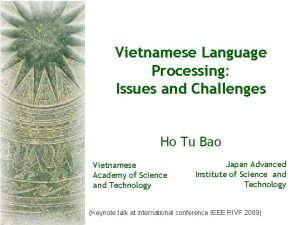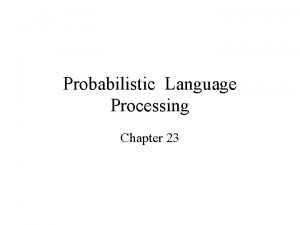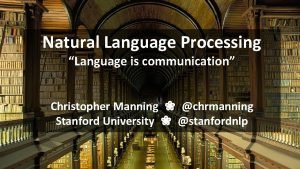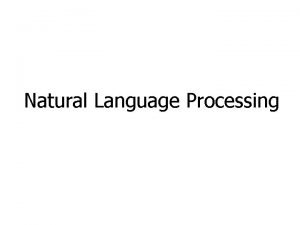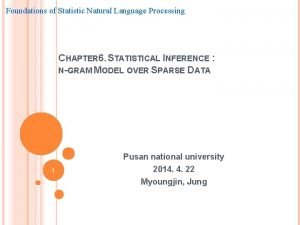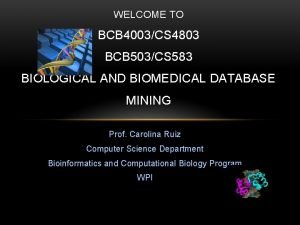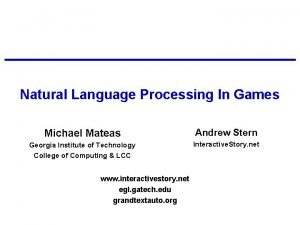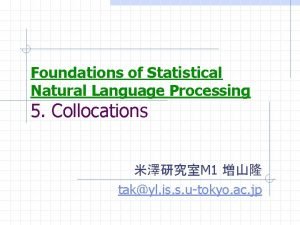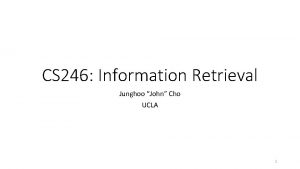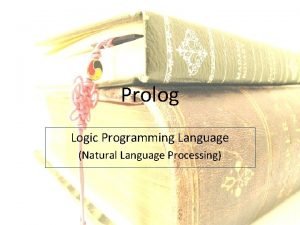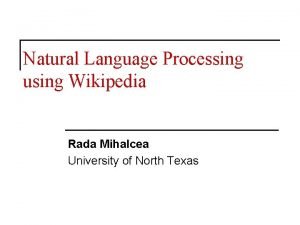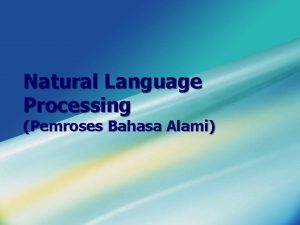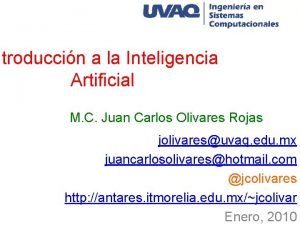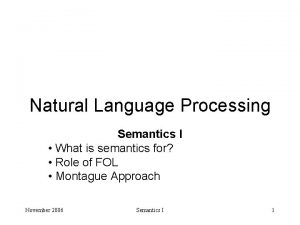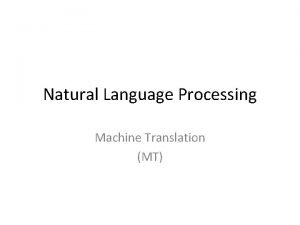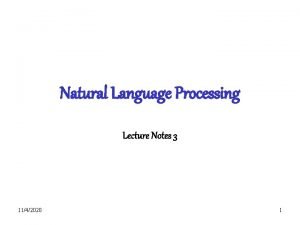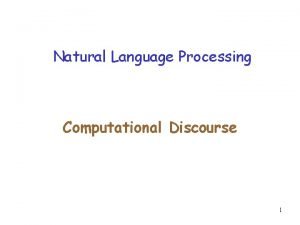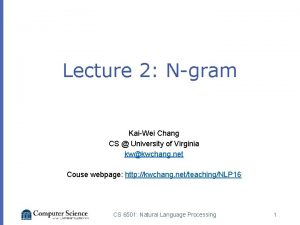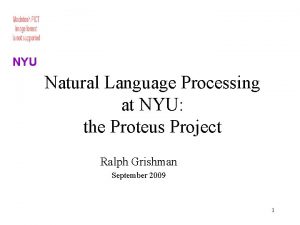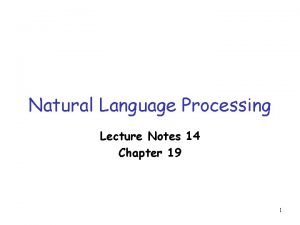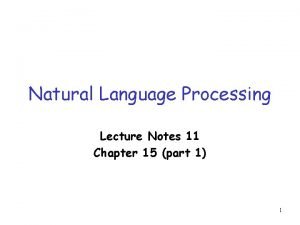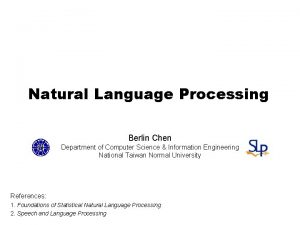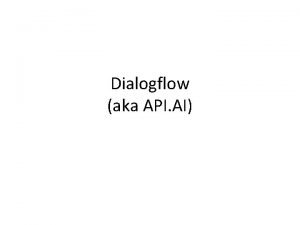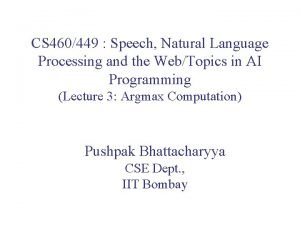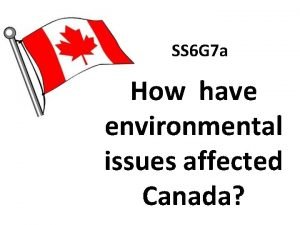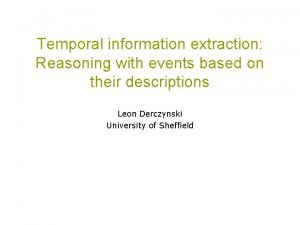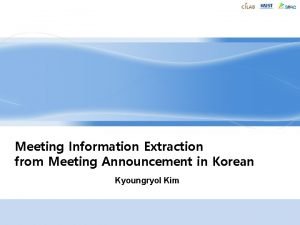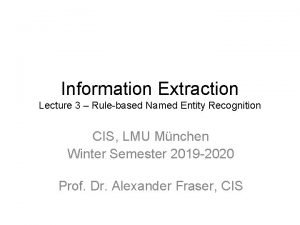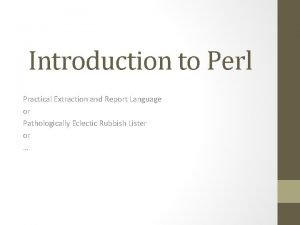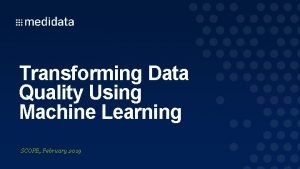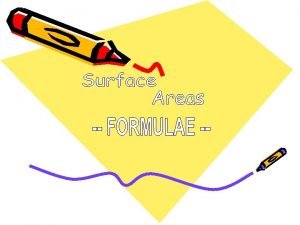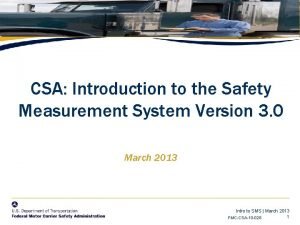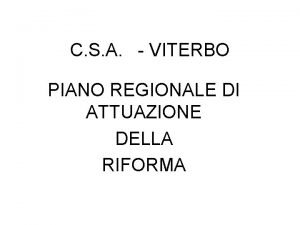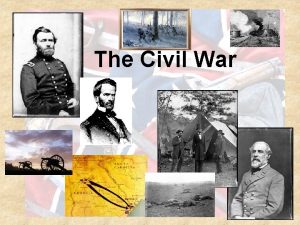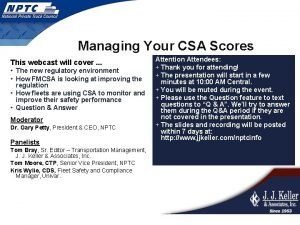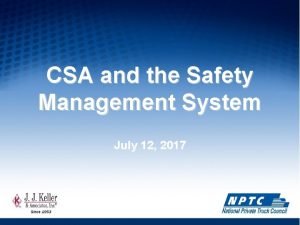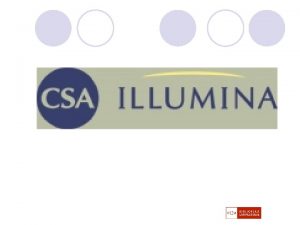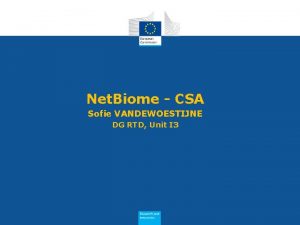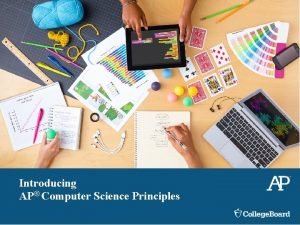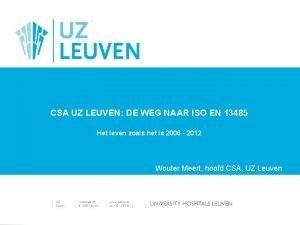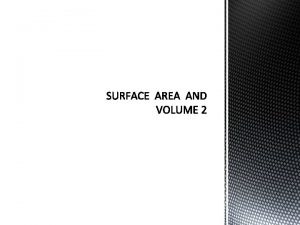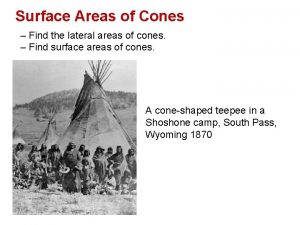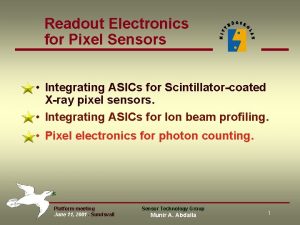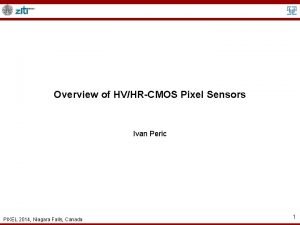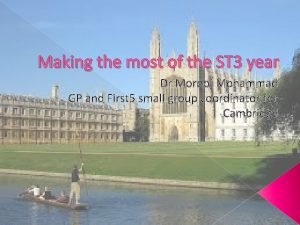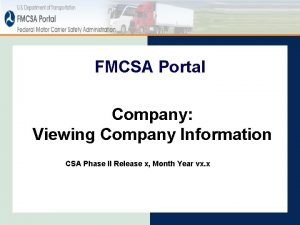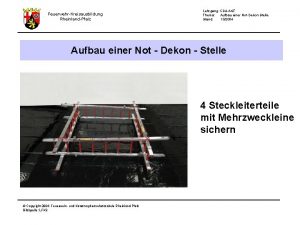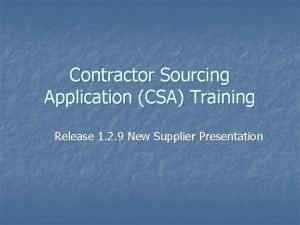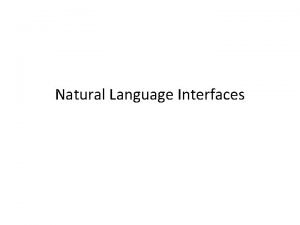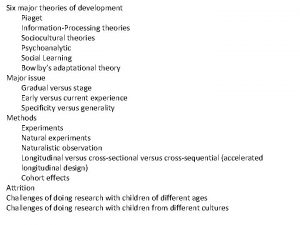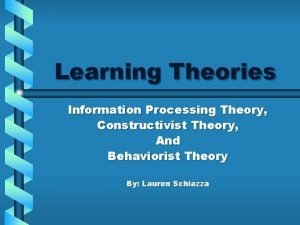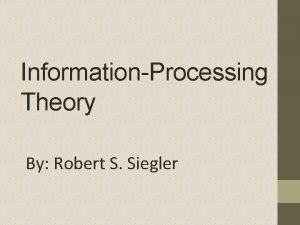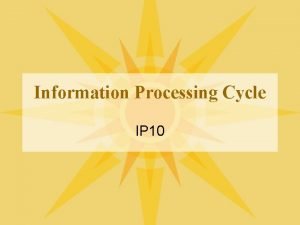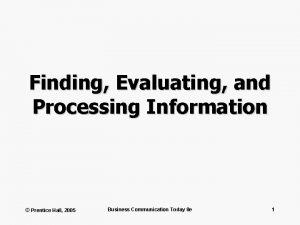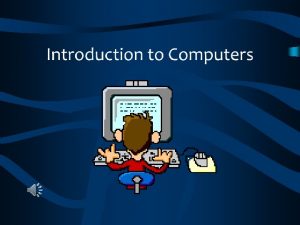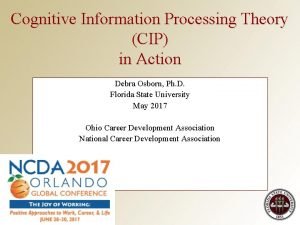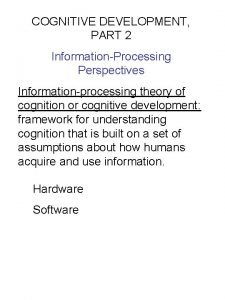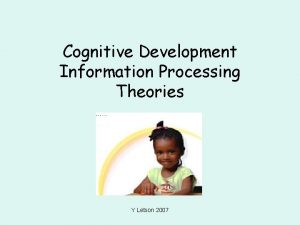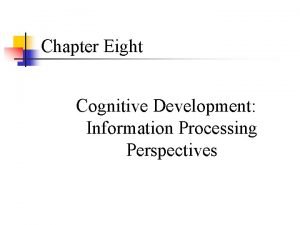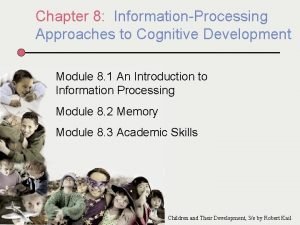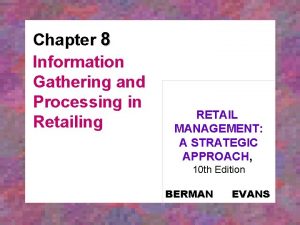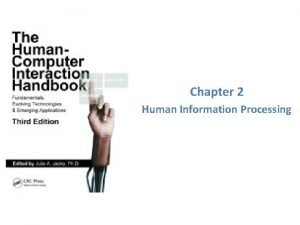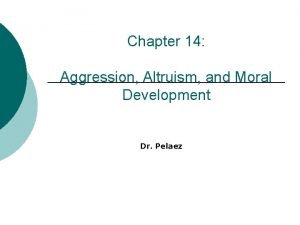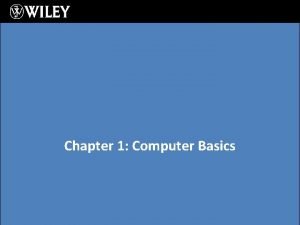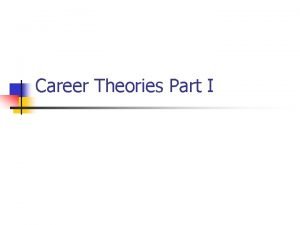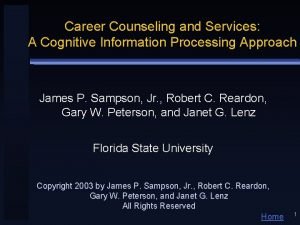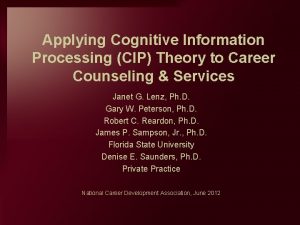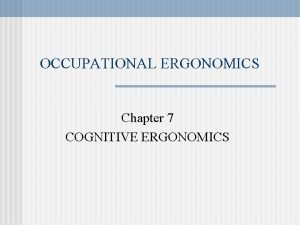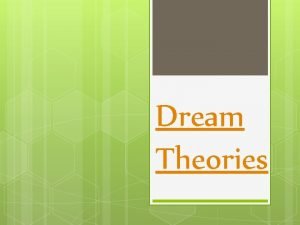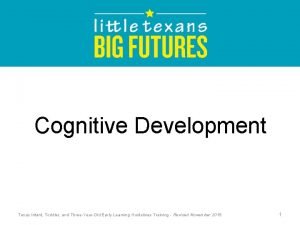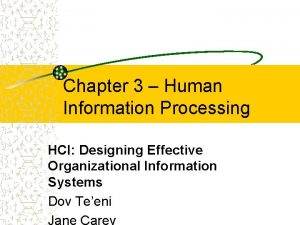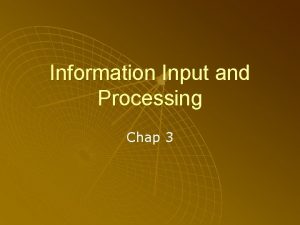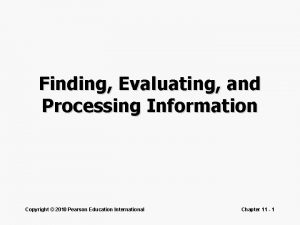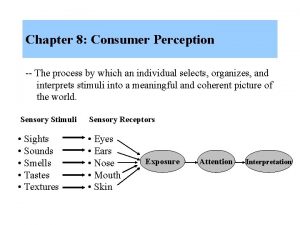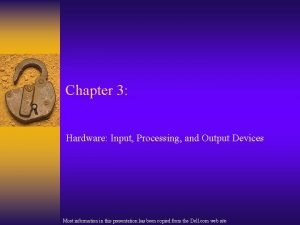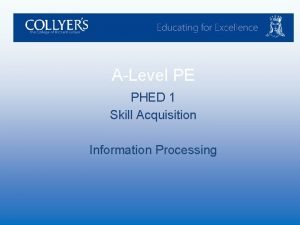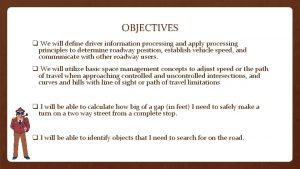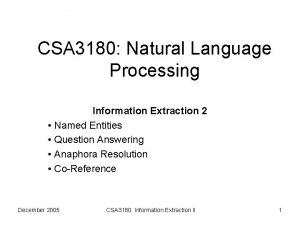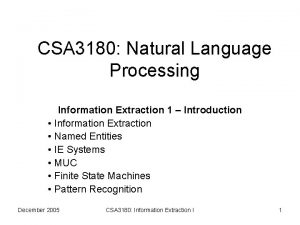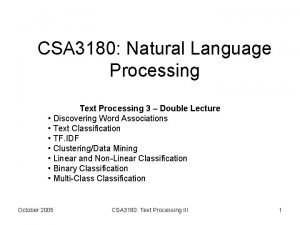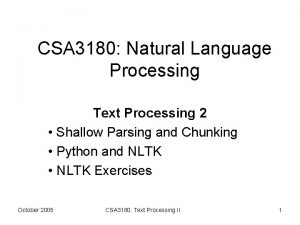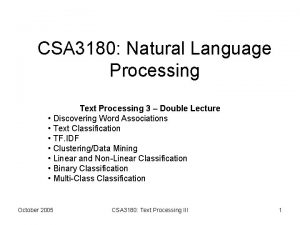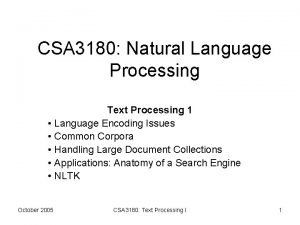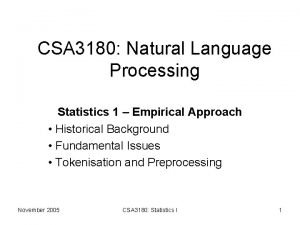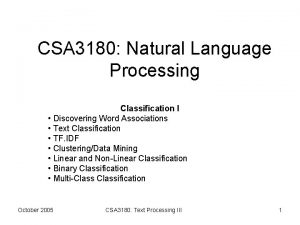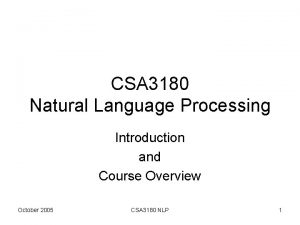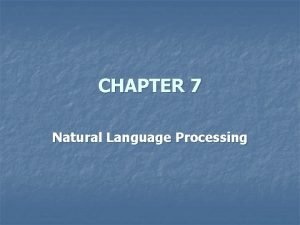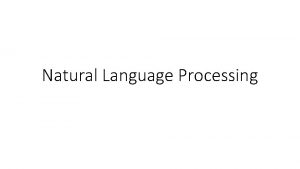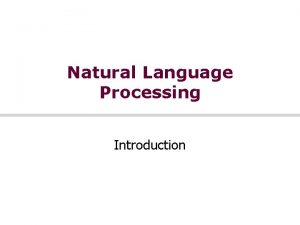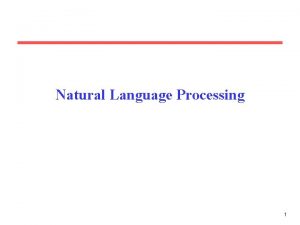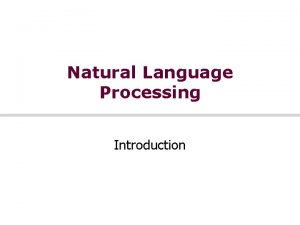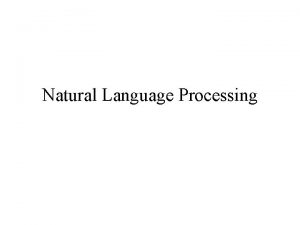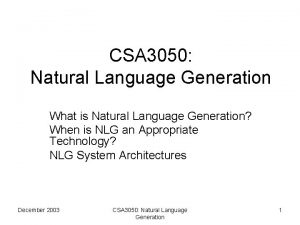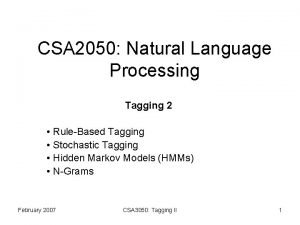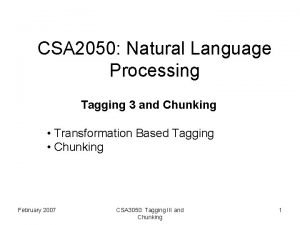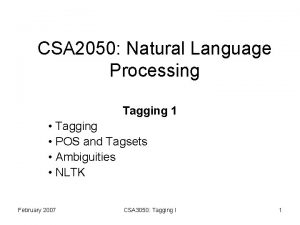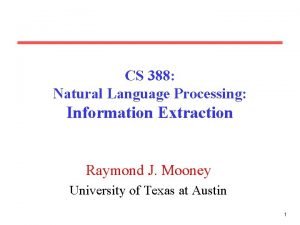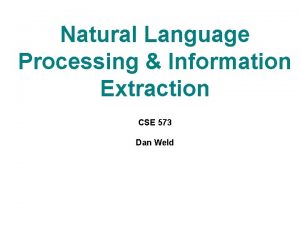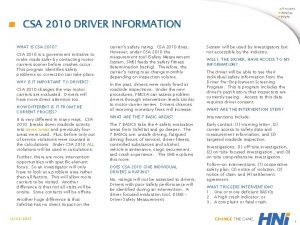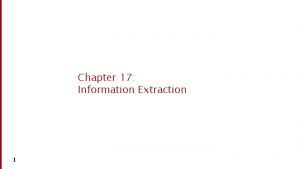CSA 3180 Natural Language Processing Information Extraction 2




































![Shallow Parsing • Ambiguously capitalised words (first word in sentence) [All American Bank] vs. Shallow Parsing • Ambiguously capitalised words (first word in sentence) [All American Bank] vs.](https://slidetodoc.com/presentation_image_h2/f410145a0af87a78945b580492658fc2/image-37.jpg)


![Context Patterns • • • • [PERSON] earns [MONEY] [PERSON] joined [ORGANIZATION] [PERSON] left Context Patterns • • • • [PERSON] earns [MONEY] [PERSON] joined [ORGANIZATION] [PERSON] left](https://slidetodoc.com/presentation_image_h2/f410145a0af87a78945b580492658fc2/image-40.jpg)
































![Anaphora Resolution [Charniak, 1972] It order to do AR, one has to be able Anaphora Resolution [Charniak, 1972] It order to do AR, one has to be able](https://slidetodoc.com/presentation_image_h2/f410145a0af87a78945b580492658fc2/image-73.jpg)

![Anaphora Resolution Models • [Hobbs, 1976] (pronominal anaphora) Naïve algorithm: - implies a surface Anaphora Resolution Models • [Hobbs, 1976] (pronominal anaphora) Naïve algorithm: - implies a surface](https://slidetodoc.com/presentation_image_h2/f410145a0af87a78945b580492658fc2/image-75.jpg)
![Anaphora Resolution Models • [Lappin & Leass, 1994] (pronominal anaphora) - syntactic structures an Anaphora Resolution Models • [Lappin & Leass, 1994] (pronominal anaphora) - syntactic structures an](https://slidetodoc.com/presentation_image_h2/f410145a0af87a78945b580492658fc2/image-76.jpg)
![Anaphora Resolution Models • [Sidner, 1981], [Grosz&Sidner, 1986] - focus/attentional based - give more Anaphora Resolution Models • [Sidner, 1981], [Grosz&Sidner, 1986] - focus/attentional based - give more](https://slidetodoc.com/presentation_image_h2/f410145a0af87a78945b580492658fc2/image-77.jpg)
![AR Models: Centering • [Grosz, Joshi, Weinstein, 1983, 1995] • [Brennan, Friedman and Pollard, AR Models: Centering • [Grosz, Joshi, Weinstein, 1983, 1995] • [Brennan, Friedman and Pollard,](https://slidetodoc.com/presentation_image_h2/f410145a0af87a78945b580492658fc2/image-78.jpg)
![AR Models: Centering a. I haven’t seen Jeff for several days. Cf = (I=[I], AR Models: Centering a. I haven’t seen Jeff for several days. Cf = (I=[I],](https://slidetodoc.com/presentation_image_h2/f410145a0af87a78945b580492658fc2/image-79.jpg)
![AR Models: Centering b. Carl thinks he’s studying for his exams. Cf = ([Carl], AR Models: Centering b. Carl thinks he’s studying for his exams. Cf = ([Carl],](https://slidetodoc.com/presentation_image_h2/f410145a0af87a78945b580492658fc2/image-80.jpg)
![Anaphora Resolution Models • [Mitkov, 1998] - knowledge-poor approach POS tagger, noun phrase rules Anaphora Resolution Models • [Mitkov, 1998] - knowledge-poor approach POS tagger, noun phrase rules](https://slidetodoc.com/presentation_image_h2/f410145a0af87a78945b580492658fc2/image-81.jpg)























![Knowledge Sources • [Kennedy and Boguraev, 1996]: a marker of syntactic function and a Knowledge Sources • [Kennedy and Boguraev, 1996]: a marker of syntactic function and a](https://slidetodoc.com/presentation_image_h2/f410145a0af87a78945b580492658fc2/image-105.jpg)

![Heuristics/Rules • [Kennedy and Boguraev, 1996]: a pronoun cannot corefer a constituent (NP) which Heuristics/Rules • [Kennedy and Boguraev, 1996]: a pronoun cannot corefer a constituent (NP) which](https://slidetodoc.com/presentation_image_h2/f410145a0af87a78945b580492658fc2/image-107.jpg)


- Slides: 109

CSA 3180: Natural Language Processing Information Extraction 2 • Named Entities • Question Answering • Anaphora Resolution • Co-Reference December 2005 CSA 3180: Information Extraction II 1

Introduction • Slides partially based on talk by Lucian Vlad Lita • Sheffield GATE Multilingual Extraction slides based on Diana Maynard’s talks • Anaphora resolution slides based on Dan Cristea slides, with additional input from Gabriela-Eugenia Dima, Oana Postolache and Georgiana Puşcaşu December 2005 CSA 3180: Information Extraction II 2

References • Fastus System Documentation • Robert Gaizauskas “IE Perspective on Text Mining” • Daniel Bikel’s “Nymble: A High Performance Learning Name Finder” • Helena Ahonen-Myka’s notes on FSTs • Javelin system documentation • MUC 7 Overview & Results December 2005 CSA 3180: Information Extraction II 3

Named Entities • Person Name: Colin Powell, Frodo • Location Name: Middle East, Aiur • Organization: UN, DARPA • Domain Specific vs. Open Domain December 2005 CSA 3180: Information Extraction II 4

Nymble (BBN Corporation) • • State of the art system Near-human performance ~90% accuracy Statistical system Approach: Hidden Markov Model (HMM) December 2005 CSA 3180: Information Extraction II 5

Nymble (BBN Corporation) • Noisy channel paradigm • Originally, entities were marked in the raw text • Post noisy channel, annotation is lost • Probability of most likely sequence of name classes (NC) given a sequence of words (W) Pr(NC|W) = Pr(W, NC) / Pr(W) since the a priori probability of the word sequence can be considered constant for any given sentence maximize just numerator December 2005 CSA 3180: Information Extraction II 6

Nymble (BBN Corporation) Person Start of Sentence End of Sentence Organization Five other classes Not-A-Name December 2005 CSA 3180: Information Extraction II 7

Automatic Content Extraction • DARPA ACE Program • Identify Entities – Named: Bilbo, San Diego, UNICEF – Nominal: the president, the hobbit – Pronominal: she • Reference resolution – Clinton the president he December 2005 CSA 3180: Information Extraction II 8

Question Answering The over-used pipeline paradigm: Question Analysis Information Retrieval Answer December 2005 CSA 3180: Information Extraction II Answer Extraction Answer Merging 9

Question Answering • Feedback loops can be present for constraint relaxation purposes • Not all QA systems adhere to the pipeline architecture • Question answering flavors – Factoid vs. complex – Who invented paper? vs. Which of Mr. Bush’s friends are Black Sabbath fans? – Closed vs. open domain December 2005 CSA 3180: Information Extraction II 10

Answer Extraction The over-used pipeline paradigm: Question Analysis Information Retrieval Answer Extraction Answer Merging • Focus on open domain, factoid question answering December 2005 CSA 3180: Information Extraction II 11

Practical Issues • Web Spell Checking – Mispling – nucular • Infrequent forms: – Niagra vs. Niagara, Filenes vs. Filene’s • Google QA • Genome, video, games December 2005 CSA 3180: Information Extraction II 12

Practical Issues • Traditional Information Extraction • Either expert built or statistical • Specific strategies for specific question types • Person Bio vs. Location question types • Ability to generalize to new questions and new question types December 2005 CSA 3180: Information Extraction II 13

Practical Issues • Who invented Blah? Blah was invented by Person. Name Blah was Verb by Person. Name where Verb is synonym to invented Blah Verb. Phrase by Person. Name December 2005 CSA 3180: Information Extraction II 14

Popular Resources • • Experts and/or Learning Algorithms Gazeteers NE taggers Part Of Speech taggers Parsers Wordnet Stopword list Stemmer December 2005 CSA 3180: Information Extraction II 15

Javelin Answer Extraction • Statistical based system (IX) – Decision Tree – KNN • XML wrapper • Simple features – POS – NE tagger – Lexical items December 2005 CSA 3180: Information Extraction II 16

Statistical IX Input • Raw question • Where is Frodo from? • Analyzed question • KEYWORD: Frodo • ATYPE: Location • QTYPE: Where. Is. From • Relevant document set • New. York. Times 203214 • Associated. Press 273545 December 2005 CSA 3180: Information Extraction II 17

Statistical IX Output • Set of candidate answers • Corresponding passages • Confidence score • PASSAGE 1: Frodo grew up in Pittsburgh working in the steel mills … • ANSWER 1: Pittsburgh • CONFIDENCE 1: . 0924 • PASSAGE 2: …she met Frodo, the French chef, on Tech Street … • ANSWER 2: French • CONFIDENCE 2: . 0493 December 2005 CSA 3180: Information Extraction II 18

IX Decision Tree Relevant Verb Present No Yes Average Distance between QTerms and ATerms 7 Yes December 2005 No More than 50% QTerms Present Yes CSA 3180: Information Extraction II No 19

IX Training Data • Positive examples – some correct question and answer pairs • Negative examples? December 2005 CSA 3180: Information Extraction II 20

IX Training Data • Positive examples – some correct question and answer pairs • Negative examples • All other sentences that do not contain the answer to the question. – Q: In what state can you find “Stop Except When Right Turn” signs? – A: Pennsylvania has SEWRD traffic signs. December 2005 CSA 3180: Information Extraction II 21

IX Training Data • Positive examples – some correct question and answer pairs • Negative examples • All other sentences that do not contain the answer to the question. • Sentences that contain the answer but do not actually answer the question – Q: In what state can you find “Stop Except Right Turn” signs? – A: The New York born driver resented SERT traffic signs. December 2005 CSA 3180: Information Extraction II 22

Text Quality and Comparisons • Sentence Splitting • Word Casing • Distortion: negation, opinion, past event, ordering • Relaxation • Ambiguity December 2005 CSA 3180: Information Extraction II 23

Text Quality and Comparisons • Sentence Splitting – Period, Exclamation Mark, Question Mark – Ambiguities: Calif. , Mr. – Deeper ambiguities: No. , A. – Assuming abbreviations are detected – I’d like to live in Southern Calif. where it never rains. – I’d like to live in Southern Calif. It never rains there. – Rule based sentence splitter and statistical models December 2005 CSA 3180: Information Extraction II 24

Text Quality and Comparisons • Word Casing – News Stories – news source & style • … Prime Minister Blair … • … prime minister Blair … – Headlines, Titles, Teasers • Six Fired In New York Q-Mart Scandal – Broadcast news transcription errors • President George bush has … December 2005 CSA 3180: Information Extraction II 25

Text Quality and Comparisons • Distortions – Negation • Frodo was not skiing in the Aspens last winter. • Common Misconceptions about Warcraft III – Opinion • I really believe that Santa Claus exists. – Past Event • Long time ago, people did indeed live in caves. – Ordinal numerals • Aretha Franklin was the third woman to invent the soul. December 2005 CSA 3180: Information Extraction II 26

Text Quality and Comparisons • Relaxation – Reason • Not enough documents • No answer found – Method • Query expansion • Synonymy based pattern expansion December 2005 CSA 3180: Information Extraction II 27

Text Quality and Comparisons • Relaxation – Reason • Not enough documents • No answer found – Method • Query expansion • Synonymy based pattern expansion – Pros: • Invent can be extended to create and discover – Cons • Invent can be extended to Martha Stewart if enough documents say that she re-invented herself December 2005 CSA 3180: Information Extraction II 28

Text Quality and Comparisons • Ambiguity – Word level • Raptors can be found in Pittsburgh on Forbes Ave. – Velociraptors – Motorcycles – Reference resolution • Frodo blah Sam blah, who blah December 2005 CSA 3180: Information Extraction II 29

Multi-Source and Multi-Lingual IE • With traditional query engines, getting the facts can be hard and slow • Where has the Queen visited in the last year? • Which places on the East Coast of the US have had cases of West Nile Virus? • Constructing a database through IE and linking it back to the documents can provide a valuable alternative search tool. • Even if results are not always accurate, they can be valuable if linked back to the original text December 2005 CSA 3180: Information Extraction II 30

Multi-Source and Multi-Lingual IE • For access to news • identify major relations and event types (e. g. within foreign affairs or business news) • For access to scientific reports • identify principal relations of a scientific subfield (e. g. pharmacology, genomics) December 2005 CSA 3180: Information Extraction II 31

Application Example - KIM Ontotext’s KIM query and results December 2005 CSA 3180: Information Extraction II 32

Application Example - GATE December 2005 CSA 3180: Information Extraction II 33

Complex Problems in NE • Issues of style, structure, domain, genre etc. • Punctuation, spelling, spacing, formatting Dept. of Computing and Maths Manchester Metropolitan University Manchester United Kingdom > Tell me more about Leonardo > Da Vinci December 2005 CSA 3180: Information Extraction II 34

Approaches • Knowledge Engineering Learning Systems • rule based • developed by experienced language engineers • make use of human intuition • require only small amount of training data • development can be very time consuming • some changes may be hard to accommodate • December 2005 • • • use statistics or other machine learning developers do not need LE expertise require large amounts of annotated training data some changes may require reannotation of the entire training corpus CSA 3180: Information Extraction II 35

Shallow Parsing • Internal evidence – names often have internal structure. These components can be either stored or guessed, e. g. location: Cap. Word + {City, Forest, Center, River} e. g. Sherwood Forest Cap. Word + {Street, Boulevard, Avenue, Crescent, Road} e. g. Portobello Street December 2005 CSA 3180: Information Extraction II 36
![Shallow Parsing Ambiguously capitalised words first word in sentence All American Bank vs Shallow Parsing • Ambiguously capitalised words (first word in sentence) [All American Bank] vs.](https://slidetodoc.com/presentation_image_h2/f410145a0af87a78945b580492658fc2/image-37.jpg)
Shallow Parsing • Ambiguously capitalised words (first word in sentence) [All American Bank] vs. All [State Police] • Semantic ambiguity "John F. Kennedy" = airport (location) "Philip Morris" = organisation • Structural ambiguity [Cable and Wireless] vs. [Microsoft] and [Dell] [Center for Computational Linguistics] vs. message from [City Hospital] for [John Smith] December 2005 CSA 3180: Information Extraction II 37

Shallow Parsing + Context • Use of context-based patterns is helpful in ambiguous cases • "David Walton" and "Goldman Sachs" are indistinguishable • But with the phrase "David Walton of Goldman Sachs" and the Person entity "David Walton" recognised, we can use the pattern "[Person] of [Organization]" to identify "Goldman Sachs“ correctly. December 2005 CSA 3180: Information Extraction II 38

Shallow Parsing + Context • Use KWIC index and concordancer to find windows of context around entities • Search for repeated contextual patterns of either strings, other entities, or both • Manually post-edit list of patterns, and incorporate useful patterns into new rules • Repeat with new entities December 2005 CSA 3180: Information Extraction II 39
![Context Patterns PERSON earns MONEY PERSON joined ORGANIZATION PERSON left Context Patterns • • • • [PERSON] earns [MONEY] [PERSON] joined [ORGANIZATION] [PERSON] left](https://slidetodoc.com/presentation_image_h2/f410145a0af87a78945b580492658fc2/image-40.jpg)
Context Patterns • • • • [PERSON] earns [MONEY] [PERSON] joined [ORGANIZATION] [PERSON] left [ORGANIZATION] [PERSON] joined [ORGANIZATION] as [JOBTITLE] [ORGANIZATION]'s [JOBTITLE] [PERSON] [ORGANIZATION] [JOBTITLE] [PERSON] the [ORGANIZATION] [JOBTITLE] part of the [ORGANIZATION] headquarters in [LOCATION] price of [ORGANIZATION] sale of [ORGANIZATION] investors in [ORGANIZATION] is worth [MONEY] [JOBTITLE] [PERSON], [JOBTITLE] December 2005 CSA 3180: Information Extraction II 40

Context Patterns • Patterns are only indicators based on likelihood • Can set priorities based on frequency thresholds • Need training data for each domain • More semantic information would be useful (e. g. to cluster groups of verbs) December 2005 CSA 3180: Information Extraction II 41

Case Study: MUSE • MUSE: MUlti-Source Entity Recognition • An IE system developed within GATE • Performs NE and coreference on different text types and genres • Uses knowledge engineering approach with hand-crafted rules • Performance rivals that of machine learning methods • Easily adaptable December 2005 CSA 3180: Information Extraction II 42

MUSE Modules • • Document format and genre analysis Tokenisation Sentence splitting POS tagging Gazetteer lookup Semantic grammar Orthographic coreference Nominal and pronominal coreference December 2005 CSA 3180: Information Extraction II 43

Switching Controller • Rather than have a fixed chain of processing resources, choices can be made automatically about which modules to use • Texts are analysed for certain identifying features which are used to trigger different modules • For example, texts with no case information may need different POS tagger or gazetteer lists • Not all modules are language-dependent, so some can be reused directly December 2005 CSA 3180: Information Extraction II 44

Multilingual MUSE • MUSE has been adapted to deal with different languages • Currently systems for English, French, German, Romanian, Bulgarian, Russian, Cebuano, Hindi, Chinese, Arabic • Separation of language-dependent and language-independent modules and submodules • Annotation projection experiments December 2005 CSA 3180: Information Extraction II 45

IE in Surprise Languages • Adaptation to an unknown language in a very short timespan • Cebuano: – Latin script, capitalisation, words are spaced – Few resources and little work already done – Medium difficulty • Hindi: – Non-Latin script, different encodings used, no capitalisation, words are spaced – Many resources available – Medium difficulty December 2005 CSA 3180: Information Extraction II 46

Multilingual IE Requirements • Extensive support for non-Latin scripts and text encodings, including conversion utilities – Automatic recognition of encoding – Occupied up to 2/3 of the TIDES Hindi effort • Bilingual dictionaries • Annotated corpus for evaluation • Internet resources for gazetteer list collection (e. g. , phone books, yellow pages, bi-lingual pages) December 2005 CSA 3180: Information Extraction II 47

Multilingual Data Editing GATE Unicode Kit (GUK) Complements Java’s facilities • Support for defining Input Methods (IMs) • currently 30 IMs for 17 languages • Pluggable in other applications (e. g. JEdit) December 2005 CSA 3180: Information Extraction II 48

Multilingual IE Processing All processing, visualisation and editing tools use GUK December 2005 CSA 3180: Information Extraction II 49

Anaphora Resolution unprocessed text annotation tool AR golden standard AR engine AR annotated text fine-tuning comparison & evaluation December 2005 CSA 3180: Information Extraction II 50

Anaphora Resolution • Text: – Nature of discourse – Anaphoric phenomena • Anaphora Resolution Engines: – Models – General AR Frameworks – Knowledge Sources December 2005 CSA 3180: Information Extraction II 51

Anaphora Resolution Anaphora represents the relation between a “proform” (called an “anaphor”) and another term (called an "antecedent"), when the interpretation of the anaphor is in a certain way determined by the interpretation of the antecedent. Barbara Lust, Introduction to Studies in the Acquisition of Anaphora, D. Reidel, 1986 December 2005 CSA 3180: Information Extraction II 52

Anaphora Example It was a bright cold day in April, and the clocks were striking thirteen. Winston Smith, his chin nuzzled into his breast in an effort to escape the vile wind, slipped quickly through the glass doors of Victory Mansions, though not quickly enough to prevent a swirl of gritty dust from entering along with him. Orwell, 1984 antecedent December 2005 anaphor antecedent CSA 3180: Information Extraction II anaphor 53

Anaphora • pronouns (personal, demonstrative, . . . ) – full pronouns – clitics (RO: dă-mi-l, IT: dammelo) • nouns – definite – indefinite • adjectives, numerals (generally associated with an ellipsis) • In this the play is expressionist 1 in its approach to theme. • But it is also so 1 in its use of unfamiliar devices. . . December 2005 CSA 3180: Information Extraction II 54

Referential Expressions • mark the noun phrases • for each NP ask a question about it • keep as REs those NPs that can be naturally referenced in the question The policeman got in the car in a hurry in order to catch the run-away thief. December 2005 CSA 3180: Information Extraction II 55

Referential Expressions a. John was going down the street looking for Bill‘s house. b. He found it at the first corner. December 2005 CSA 3180: Information Extraction II 56

Referential Expressions a. John was going down the street looking for Bill‘s house. b. He met him at the first corner. December 2005 CSA 3180: Information Extraction II 57

Referential Expressions The empty anaphor Gianni diede una mela a Michele. Piu tardi, gli diede un’arancia. [Not&Zancanara, 1996] John gave an apple to Michelle. Later on, gave her an orange. December 2005 CSA 3180: Information Extraction II 58

Textual Ellipsis The functional (bridge) anaphora The state of the accumulator is indicated to the user. 30 minutes before the complete uncharge, the computer signals for 5 seconds. [Strube&Hahn, 1996] December 2005 CSA 3180: Information Extraction II 59

Events, States, Descriptions He left without eating 1. Because of this 1 , he was starving in the evening. But, he adds, Priesley is more interested in Johnson living than in Johnson dead 1. In this 1 the play is expressionist in its approach to theme. [Halliday & Hassan, 1976] December 2005 CSA 3180: Information Extraction II 60

Definite/Indefinite NPs Once upon a time, there was a king and a queen. And the king one day went hunting. Apollo took out his bow. . . Take the elevator to the 4 th floor. December 2005 CSA 3180: Information Extraction II 61

Anaphora Resolution • State of the art in Anaphora Resolution: – Identity: 65 -80% – Other: much less… December 2005 CSA 3180: Information Extraction II 62

What is so difficult? Nothing – everything is so simple! John 1 has just arrived. He 1 seems tired. The girl 1 leaves the trash on the table and wants to go away. The boy 2 tries to hold her 1 by the arm 3 1; she 1 escapes and runs; he 2 calls her 1 back. Caragiale, At the Mansion December 2005 CSA 3180: Information Extraction II 63

What is so difficult? Nothing indeed, but imagine letting the machine go wrong. . . There‘s a pile of inflammable trash next to your car. You‘ll have to get rid of it. If the baby does not thrive on the raw milk, boil it. [Hobbs, 1997] December 2005 CSA 3180: Information Extraction II 64

What is so difficult? Semantic restrictions Jeff 1 helped Dick 2 wash the car. He 1 washed the windows as Dick 2 waxed the car. He 1 soaped a pane. Jeff 1 helped Dick 2 wash the car. He 1 washed the windows as Dick 2 waxed the car. He 2 buffed the hood. [Walker, Joshi & Prince, 1997] December 2005 CSA 3180: Information Extraction II 65

What is so difficult? Semantic corelates An elephant 1 hit the car with the trunk. The animal 1 had to be taken away not to produce other damages. * An animal 1 hit the car with the trunk. The elephant 1 had to be taken away not to produce other damages. December 2005 CSA 3180: Information Extraction II 66

What is so difficult? Long distance recovery (pronominalization) 1. 2. 3. 4. 5. His re-entry into Hollywood came with the movie “Brainstorm”, but its completion and release has been delayed by the death of co-star Natalie Wood. He plays Hugh Hefner of Playboy magazine in Bob Fosse’s “Star 80. ” It’s about Dorothy Stratton, the Playboy Playmate who was killed by her husband. He also stars in the movie “Class. ” Los Angeles Times, July 18, 1983, cited in [Fox, 1986] December 2005 CSA 3180: Information Extraction II 67

What is so difficult? Gender mismatches Mr. Chairman. . . , what is her position upon this issue? (political correctness!!) Number mismatches The government discussed. . . They. . . December 2005 CSA 3180: Information Extraction II 68

What is so difficult? Distributed antecedents John 1 invited Mary 2 to the cinema. After the movie ended they 3={1, 2} went to a restaurant. December 2005 CSA 3180: Information Extraction II 69

What is so difficult? Empty/non-empty anaphors John gave an apple to Michelle. Later on, gave her an orange. John gave an apple to Michelle. Later on, he gave her an orange. John gave an apple to Michelle. Later on, this one asks him for an orange. December 2005 CSA 3180: Information Extraction II 70

Semantics are Essential Police. . . They Teacher. . . She/He A car. . . The automobile A Mercedes. . . The car A lamp. . . The bulb December 2005 CSA 3180: Information Extraction II 71

Semantics are not all • Pronouns - poor semantic features he she it they [+animate, +male, +singular] [+animate, +female, +singular] [+inanimate, +singular] [+plural] • Gender in Romance languages Ro. maşină = ea (feminine) Ro. automobil = el (masculine) • Anaphora resolution by concord rules Un camion a heurté une voiture. Celle-ci a été complètement détruite. Gender match! Gender mismatch ! (A truck hit a car. It was completely destroyed. ) December 2005 CSA 3180: Information Extraction II 72
![Anaphora Resolution Charniak 1972 It order to do AR one has to be able Anaphora Resolution [Charniak, 1972] It order to do AR, one has to be able](https://slidetodoc.com/presentation_image_h2/f410145a0af87a78945b580492658fc2/image-73.jpg)
Anaphora Resolution [Charniak, 1972] It order to do AR, one has to be able to do everything else. Once everything else is done AR comes for free. December 2005 CSA 3180: Information Extraction II 73

Anaphora Resolution Most current anaphora resolution systems implement a pipeline architecture with three modules: Referential expressions • Collect: determines the List of Potential Antecedents (LPAs). a 1 , a 2 , a 3 , … a n Collect • Filter: eliminates from the LPA the referees that are incompatible with the referential expression under scrutiny. • Preference: determines the most likely antecedent on the basis of an ordering policy. December 2005 a 1 , a 2 , a 3 , … a n Filter Preference CSA 3180: Information Extraction II 74
![Anaphora Resolution Models Hobbs 1976 pronominal anaphora Naïve algorithm implies a surface Anaphora Resolution Models • [Hobbs, 1976] (pronominal anaphora) Naïve algorithm: - implies a surface](https://slidetodoc.com/presentation_image_h2/f410145a0af87a78945b580492658fc2/image-75.jpg)
Anaphora Resolution Models • [Hobbs, 1976] (pronominal anaphora) Naïve algorithm: - implies a surface parse tree - navigation on the syntactic tree of the anaphor‘s sentence and the preceding ones in the order of recency, each tree in a left-to-right, breadth-first manner A semantic approach: - implies a semantic representation of the sentences (logical expression) - a collection of semantic operations (inferences) - type of pronoun is important December 2005 CSA 3180: Information Extraction II 75
![Anaphora Resolution Models Lappin Leass 1994 pronominal anaphora syntactic structures an Anaphora Resolution Models • [Lappin & Leass, 1994] (pronominal anaphora) - syntactic structures an](https://slidetodoc.com/presentation_image_h2/f410145a0af87a78945b580492658fc2/image-76.jpg)
Anaphora Resolution Models • [Lappin & Leass, 1994] (pronominal anaphora) - syntactic structures an intrasentensial syntactic filtering morphological filter (person, number, gender) detection of pleonastic pronouns salience parameters (grammatical role, parallelism of grammatical roles, frequency of mention, proximity, sentence recency) December 2005 CSA 3180: Information Extraction II 76
![Anaphora Resolution Models Sidner 1981 GroszSidner 1986 focusattentional based give more Anaphora Resolution Models • [Sidner, 1981], [Grosz&Sidner, 1986] - focus/attentional based - give more](https://slidetodoc.com/presentation_image_h2/f410145a0af87a78945b580492658fc2/image-77.jpg)
Anaphora Resolution Models • [Sidner, 1981], [Grosz&Sidner, 1986] - focus/attentional based - give more salience to those semantic entities that are in focus - define where to look for an antecedent in the semantic structure of the preceding text (a stack in G&S‘s model) December 2005 CSA 3180: Information Extraction II 77
![AR Models Centering Grosz Joshi Weinstein 1983 1995 Brennan Friedman and Pollard AR Models: Centering • [Grosz, Joshi, Weinstein, 1983, 1995] • [Brennan, Friedman and Pollard,](https://slidetodoc.com/presentation_image_h2/f410145a0af87a78945b580492658fc2/image-78.jpg)
AR Models: Centering • [Grosz, Joshi, Weinstein, 1983, 1995] • [Brennan, Friedman and Pollard, 1987] • Cf(u) = <e 1, e 2, . . . ek> - an ordered list • Cb(u) = ei • Cp(u) = e 1 Cb(u) = Cb(u-1) Cb(u) = Cp(u) Cb(u) Cp(u) CONTINUING SMOOTH SHIFT RETAINING ABRUPT SHIFT • CON > RET > SSH > ASH December 2005 CSA 3180: Information Extraction II 78
![AR Models Centering a I havent seen Jeff for several days Cf II AR Models: Centering a. I haven’t seen Jeff for several days. Cf = (I=[I],](https://slidetodoc.com/presentation_image_h2/f410145a0af87a78945b580492658fc2/image-79.jpg)
AR Models: Centering a. I haven’t seen Jeff for several days. Cf = (I=[I], [Jeff]) Cb = [I] b. Carl thinks he’s studying for his exams. Cf = ([Carl], he=[Jeff], [Jeff´s exams]) Cb = [Jeff] c. I think he? went to the Cape with Linda. [Grosz, Joshi & Weinstein, 1983] December 2005 CSA 3180: Information Extraction II 79
![AR Models Centering b Carl thinks hes studying for his exams Cf Carl AR Models: Centering b. Carl thinks he’s studying for his exams. Cf = ([Carl],](https://slidetodoc.com/presentation_image_h2/f410145a0af87a78945b580492658fc2/image-80.jpg)
AR Models: Centering b. Carl thinks he’s studying for his exams. Cf = ([Carl], he=[Jeff], [Jeff´s exams]) Cb = [Jeff] c. I think. Jeff he? went to the Cape with Linda. Cf = (I=[I], he=[Jeff], [the Cape], [Linda]) Cb = [Jeff] Cf = (I=[I], he=[Carl], [the Cape], [Linda]) RETAINING Cb = [Carl] ABRUPT SHIFT December 2005 CSA 3180: Information Extraction II 80
![Anaphora Resolution Models Mitkov 1998 knowledgepoor approach POS tagger noun phrase rules Anaphora Resolution Models • [Mitkov, 1998] - knowledge-poor approach POS tagger, noun phrase rules](https://slidetodoc.com/presentation_image_h2/f410145a0af87a78945b580492658fc2/image-81.jpg)
Anaphora Resolution Models • [Mitkov, 1998] - knowledge-poor approach POS tagger, noun phrase rules 2 previous sentences definiteness, giveness, lexical reiteration, section heading preference, distance, terms of the field, etc. December 2005 CSA 3180: Information Extraction II 81

General Framework Build a framework capable of easily accommodating any of the existing AR models, fine-tune them, practice with them to enhance performance (learning), eventually obtaining a better model December 2005 CSA 3180: Information Extraction II 82

General Framework text AR-engine AR-model 1 AR-model 2 AR-model 3 December 2005 CSA 3180: Information Extraction II 83

Co-References • Halliday and Hassan: a semantic relation, not a textual one Co-referential anaphoric relation The text layer a a evokes centera The semantic layer December 2005 b b evokes centera CSA 3180: Information Extraction II 84

Time and Discourse • Discourse has a dynamic nature Time axes real time 1 2 discourse time 1 2 story time 2 800 December 2005 1 920 1000 1030 CSA 3180: Information Extraction II 85

Resolution Moment Police officer David Cheshire went to Dillard's home. Putting his ear next to Dillard's head, Cheshire heard the music also. [Tanaka, 1999] Cheshire December 2005 Dillard his Dillard CSA 3180: Information Extraction II Cheshire 86

Resolution Delay • Sanford and Garrod (1989) – initiation point – completion point • Information is kept in a temporary location of memory December 2005 CSA 3180: Information Extraction II 87

Cataphora – What is there? • The element referred to is anticipated by the referring element • Theories – scepticism – syntactic reality From the corner of the divan of Persian saddle-bags on which he was lying, smoking, as was his custom, innumerable cigarettes, Lord Henry Wotton could just catch the gleam of the honey-sweet and honey-coloured blossoms of a laburnum… Oscar Wilde, The Picture of Dorian Gray December 2005 CSA 3180: Information Extraction II 88

No right reference needed in discourse processing • Introduction of an empty discourse entity • Addition of new features as discourse unfolds • Pronoun anticipation in Romanian I taught Gabriel to read. = Ro. L-am învatat pe Gabriel sa citeasca. December 2005 CSA 3180: Information Extraction II 89

Unique directionality in interpretation John he he gender = masc number = sg sem = person name = John gender = masc number = sg sem = person ? name = John anaphora cataphora December 2005 CSA 3180: Information Extraction II John 90

Automatic Interpretation • necessity for an intermediate level a The text layer b RE a projects fsa The restriction layer fsa evokes centera The semantic layer December 2005 centera CSA 3180: Information Extraction II 91

Three Layer Approach to AR 1. John sold his bicycle 2. although Bill would have wanted it. his bicycle The text layer ……………………… projects The restrictions layer …… it projects no = sg ………………… sem=bicycle sem=¬human det = yes evokes no = sg The semantic layer ………… sem=bicycle det = yes December 2005 CSA 3180: Information Extraction II 92

Delayed Interpretation Police officer David Cheshire went to Dillard's home. Putting his ear next to Dillard's head, Cheshire heard the music also. t 0 The text layer The restriction layer Cheshire fs. Cheshire t 1 t 2 t 3 Dillard his Dillard fshis fs. Dillard candidates={ , } fs. Dillard The semantic layer Cheshire December 2005 Dillard CSA 3180: Information Extraction II 93

Delayed Interpretation From the corner of the divan of Persian saddle-bags on which he was lying, smoking, as was his custom, innumerable cigarettes, Lord Henry Wotton could just catch the gleam of the honey-sweet and honey-coloured blossoms of a laburnum… t 0 The text layer he time Lord Henry Wotton t 2 t 1 his projection gender=masc number=sing sem= person completes evoking name= Lord Henry Wotton The restriction layer The semantic layer December 2005 gender=masc gender = masc number=sing number = sing sem= sem =person name= Lord Henry Wotton ? CSA 3180: Information Extraction II evoking initiates 94

The case of Cataphora 1. Although Bill would have wanted it, 2. John sold his bicycle to somebody else. it The text layer ……………………… projects no = sg sem=bicycle det = yes no = sg ………………… sem=¬human The restrictions layer …… evokes The semantic layer ………… December 2005 his bicycle evokes no = sg sem=bicycle sem=¬human det = yes CSA 3180: Information Extraction II 95

AR Models • • a set of primary attributes a set of knowledge sources a set of evocation heuristics or rules a set of rules that configure the domain of referential accessibility December 2005 CSA 3180: Information Extraction II 96

AR Models REa REb REc REd The text layer ………………… REx knowledge sources The projection layer ………………. … DE DE m j The semantic layer …. ………… attrx primary attributes DE 1 heuristics/rules domain of referential accessibility December 2005 CSA 3180: Information Extraction II 97

Set of Primary Attributes a. morphological number lexical gender person December 2005 CSA 3180: Information Extraction II 98

Set of Primary Attributes b. syntactical -full syntactic description of REs as constituents of a syntactic tree [Lappin and Leass, 1994] CT based approaches [Grosz, Joshi and Weinstein, 1995], [Brennan, Friedman and Pollard, 1987], syntactic domain based approaches [Chomsky, 1981], [Reinhart, 1981], [Gordon and Hendricks, 1998], [Kennedy and Boguraev, 1996] -quality of being adjunct, embedded or complement of a preposition [Kennedy and Boguraev, 1996] -inclusion or not in an existential construction [Kennedy and Boguraev, 1996] -syntactic patterns in which the RE is involved syntactic parallelism [Kennedy and Boguraev, 1996], [Mitkov, 1997] December 2005 CSA 3180: Information Extraction II 99

Set of Primary Attributes c. semantic -position of the head of the RE in a conceptual hierarchy (animacy, sex (or natural gender), concreteness) Word. Net based models [Poesio, Vieira and Teufel, 1997] -inclusion in a synonymy class -semantic roles, out of which selectional restrictions, inferential links, pragmatic limitations, semantic parallelism and object preference can be verified December 2005 CSA 3180: Information Extraction II 100

Set of Primary Attributes d. positional -offset of the first token of the RE in the text [Kennedy and Boguraev, 1996] -inclusion in an utterance, sentence or clause, considered as a discourse unit [Hobbs, 1987], Azzam, Humphreys and Gaizauskas, 1998], [Cristea et al. , 2000] December 2005 CSA 3180: Information Extraction II 101

Set of Primary Attributes e. surface realisation (type) the domain of this feature contains: zero-pronoun, clitic pronoun, full pronoun, reflexive pronoun, possessive pronoun, demonstrative pronoun, reciprocal pronoun, expletive “it”, bare noun (undetermined NP), indefinite determined NP, proper noun (name) [Gordon and Hendricks, 1998], [Cristea et. al, 2000] December 2005 CSA 3180: Information Extraction II 102

Set of Primary Attributes f. other inclusion or not of the RE in a specific lexical field (“domain concept”) [Mitkov, 1997] - frequency of the term in the text [Mitkov, 1997] - occurrence of the term in a heading [Mitkov, 1997] December 2005 CSA 3180: Information Extraction II 103

Knowledge Sources • Type of process: incremental • A knowledge source: a (virtual) processor able to fetch values to attributes on the restriction layer • Minimum set: POS-tagger + shallow parser December 2005 CSA 3180: Information Extraction II 104
![Knowledge Sources Kennedy and Boguraev 1996 a marker of syntactic function and a Knowledge Sources • [Kennedy and Boguraev, 1996]: a marker of syntactic function and a](https://slidetodoc.com/presentation_image_h2/f410145a0af87a78945b580492658fc2/image-105.jpg)
Knowledge Sources • [Kennedy and Boguraev, 1996]: a marker of syntactic function and a set of patterns to recognises the expletive “it” (near specific sets of verbs or as subject of adjectives with clausal complements). • [Azzam, Humphreys and Gaizauskas, 1998]: a syntactic analyser, a semantic analyser, and an elementary events finder. • [Gordon and Hendrick, 1998]: a surface realisation identifier and a syntactic parser. • [Hobbs, 1978]: a syntactic analyser, a surface realisation identifier and a set of axioms to determine semantic roles and relations of lexical items. December 2005 CSA 3180: Information Extraction II 105

Heuristics/Rules • demolishing rules (applied first): rule out a possible candidate. • promoting/demoting rules: increase/decrease a salience factor associated with an attribute. December 2005 CSA 3180: Information Extraction II 106
![HeuristicsRules Kennedy and Boguraev 1996 a pronoun cannot corefer a constituent NP which Heuristics/Rules • [Kennedy and Boguraev, 1996]: a pronoun cannot corefer a constituent (NP) which](https://slidetodoc.com/presentation_image_h2/f410145a0af87a78945b580492658fc2/image-107.jpg)
Heuristics/Rules • [Kennedy and Boguraev, 1996]: a pronoun cannot corefer a constituent (NP) which contains it (the child of his brother, his is neither child, nor brother). The remaining candidates are sorted by weighing a set of attributevalues pairs (linguistically and experimentally justified). • [Gordon and Hendricks, 1997]: the antecedent’s syntactic prominence (notion related to the relative distance in a syntactic tree) influence the selection of the co-referential candidate. • [Gordon and Hendricks, 1998]: the salience of the relations between names and pronouns is calculated by using a graduation of surface realisation pairs: namepronoun > name-name > pronoun-name. December 2005 CSA 3180: Information Extraction II 107

Referential Accessibility Domain • Linear • Dorepaal, Mitkov, . . . • Hierarchical • Grosz&Sidner; Cristea, Ide&Romary, . . . December 2005 CSA 3180: Information Extraction II 108

Algorithm • consider the DEs in the order given by component 4 • for each attribute of the projected FS of the current anaphor and each candidate DE use rules of component 3 to update a preference score to link the anaphor to that DE as an antecedent • sort the candidates in the descending order of these scores • use thresholds to either: propose a new DE, link the anaphor to an existing DE or postpone decision December 2005 CSA 3180: Information Extraction II 109
 Natural language processing vietnamese
Natural language processing vietnamese Probabilistic model natural language processing
Probabilistic model natural language processing Natural language processing
Natural language processing Markov chain natural language processing
Markov chain natural language processing Manning natural language processing
Manning natural language processing Contoh bahasa alami
Contoh bahasa alami Discourse analysis nlp
Discourse analysis nlp Nlp lecture notes
Nlp lecture notes Foundations of statistical natural language processing
Foundations of statistical natural language processing Natural language processing fields
Natural language processing fields Natural language processing fields
Natural language processing fields Natural language processing lecture notes
Natural language processing lecture notes Façade michael mateas
Façade michael mateas Foundation collocation
Foundation collocation John cho ucla
John cho ucla Prologn
Prologn Rada mihalcea
Rada mihalcea Pengertian natural language processing
Pengertian natural language processing Natural language processing
Natural language processing Language synonyms
Language synonyms Natural language processing
Natural language processing Machine translation in natural language processing
Machine translation in natural language processing Natural language processing lecture notes
Natural language processing lecture notes Reference phenomenon in nlp
Reference phenomenon in nlp Kai wei chang
Kai wei chang Nyu natural language processing
Nyu natural language processing Natural language processing lecture notes
Natural language processing lecture notes Natural language processing lecture notes
Natural language processing lecture notes Natural language processing berlin
Natural language processing berlin Dialogflow nlu
Dialogflow nlu Natural language processing
Natural language processing Extraction of natural resources on the canadian shield
Extraction of natural resources on the canadian shield Temporal information extraction
Temporal information extraction Key information extraction
Key information extraction Information extraction algorithms
Information extraction algorithms Practical extraction and report language
Practical extraction and report language Practical extraction and report language
Practical extraction and report language Practical extraction and reporting language
Practical extraction and reporting language Medidata csa
Medidata csa Recursion apcsa
Recursion apcsa Schedule 5 drugs
Schedule 5 drugs Csa of cube
Csa of cube Csa basic thresholds
Csa basic thresholds Technology
Technology Csa viterbo
Csa viterbo Csa vs usa
Csa vs usa Gary petty sms
Gary petty sms How many basics are scored under csa
How many basics are scored under csa Www.csa
Www.csa Dg csa
Dg csa Ap csa
Ap csa Csa
Csa Csa notorious nine 2021
Csa notorious nine 2021 Frustum volume
Frustum volume Lateral area of come
Lateral area of come Rds.csa
Rds.csa Csa isda
Csa isda Csa tw75
Csa tw75 Csa tracking system
Csa tracking system Pennine vts
Pennine vts Fmcsa portal
Fmcsa portal Csa feuerwehr
Csa feuerwehr Ria ia csa
Ria ia csa Ibm csa login
Ibm csa login Top down processing
Top down processing Bottom up processing vs top down processing
Bottom up processing vs top down processing Bottom-up processing example
Bottom-up processing example Neighborhood processing in image processing
Neighborhood processing in image processing Secondary processing
Secondary processing Image enhancement by point processing
Image enhancement by point processing Histogram processing in digital image processing
Histogram processing in digital image processing Parallel processing vs concurrent processing
Parallel processing vs concurrent processing Nonlinear image processing
Nonlinear image processing Image processing
Image processing Digital image processing
Digital image processing Top-down processing
Top-down processing Batch processing vs interactive processing
Batch processing vs interactive processing Natural langauge processing
Natural langauge processing Natural hazards vs natural disasters
Natural hazards vs natural disasters Natural capital and natural income
Natural capital and natural income Vygosky theory
Vygosky theory Information processing theory
Information processing theory Types of internal control
Types of internal control What do information processing theories focus on
What do information processing theories focus on What is the information processing cycle
What is the information processing cycle Finding evaluating and processing information
Finding evaluating and processing information Information processing cycle
Information processing cycle Cip theory
Cip theory Pseudostupidity
Pseudostupidity Piaget information processing theory
Piaget information processing theory Information processing theory of cognitive development
Information processing theory of cognitive development Cognitive information processing theory
Cognitive information processing theory Information processing theory vs piaget
Information processing theory vs piaget Information gathering and processing in retailing
Information gathering and processing in retailing Information processing in hci
Information processing in hci Conventional morality
Conventional morality Computer basics chapter 1
Computer basics chapter 1 Cognitive information processing
Cognitive information processing In the cognitive information-processing pyramid,
In the cognitive information-processing pyramid, Cognitive information processing theory career
Cognitive information processing theory career Human information processing model ergonomics
Human information processing model ergonomics Activation-synthesis theory dreams
Activation-synthesis theory dreams Piagetian and information processing theories 8-18 months
Piagetian and information processing theories 8-18 months Human information processing hci
Human information processing hci Processing information input
Processing information input Finding evaluating and processing information
Finding evaluating and processing information Consumer information processing
Consumer information processing Hardware input processing and output devices
Hardware input processing and output devices Whiting's model of information processing
Whiting's model of information processing Information processing objectives
Information processing objectives
